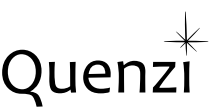Ancient Egyptian Knowledge: Healing, Astronomy, and Symbols
1. Introduction to Ancient Egyptian Knowledge
Ancient Egypt stands as a beacon of early scientific and spiritual understanding, with a legacy that intertwines celestial observations, symbolic artistry, and holistic healing practices. Their unique worldview integrated the cosmos with daily life, viewing symbols not merely as decorative motifs but as carriers of profound knowledge about the universe and human health.
Exploring these interconnected domains reveals a culture where astronomy informed spiritual beliefs, symbols embodied divine truths, and healing was both a physical and spiritual process. This article aims to bridge ancient Egyptian wisdom with modern interpretations, illustrating how these timeless principles continue to influence contemporary thought.
2. Foundations of Egyptian Cosmology and Astronomy
The Egyptians perceived the universe as a harmonious order, with celestial bodies functioning as divine indicators of cosmic and earthly events. Their observations of the stars and planets were meticulous, forming the basis of their religious narratives and practical applications.
A pivotal aspect was their understanding of the Nile’s flooding cycle, which was directly linked to the heliacal rising of Sirius (known as Sothis). This astronomical event predicted the annual inundation, vital for agriculture and survival. The heliacal rising of Sirius became a sacred marker, influencing both farming calendars and religious festivals.
Symbolic representations of celestial bodies—such as the sun disk, stars, and the moon—abounded in Egyptian art and hieroglyphs. These symbols often depicted divine entities associated with celestial phenomena, underscoring their spiritual significance and their role in guiding human destiny.
Table 1: Egyptian Celestial Symbols and Their Significance
| Symbol | Meaning | Religious Context |
|---|---|---|
| Sun Disk (Aten) | Ra, the sun god | Symbol of divine power and creation |
| Sirius (Sothis) | Inundation predictor | Associated with Isis and Osiris mythologies |
| Lunar Crescent | Moon phases and cycles | Linked to rebirth and renewal ceremonies |
3. Symbolism in Egyptian Religion and Daily Life
Symbols were the language through which Egyptians expressed divine truths, embodying qualities like protection, power, and harmony. Wings, for instance, symbolized divine protection and the presence of deities guarding the soul during its journey.
The use of gold in artifacts and jewelry was not merely for aesthetics but reflected the divine flesh of gods—symbolizing immortality, divine essence, and eternal light. Such symbolism elevated everyday objects into spiritual tools, blurring the line between the physical and spiritual realms.
These symbols served as bridges—visual representations that connected mortals with divine energies, facilitating spiritual communication and protection. For example, the winged solar disk often appeared over tombs and temples, signifying divine oversight and eternal protection.
4. The Role of Healing and Medicine in Ancient Egypt
Egyptian medicine was a synthesis of natural remedies, spiritual practices, and symbolic rituals. Medical papyri reveal detailed descriptions of herbal medicines alongside incantations invoking divine aid. Healing was viewed as restoring the balance between physical health and spiritual harmony.
Astronomy and symbolism played crucial roles in healing rituals. Certain celestial events were believed to influence health, prompting specific rites or treatments aligned with cosmic cycles. Protective symbols like the Eye of Horus were used to ward off illness and restore wholeness.
The Eye of Horus, for example, was widely employed in amulets and charms—believed to offer protection, promote recovery, and restore vitality. This demonstrates how spiritual symbolism directly informed practical healing measures.
5. The Eye of Horus: A Case Study in Symbolic and Practical Knowledge
The Eye of Horus originates from mythological stories where Horus’s eye was wounded and subsequently restored by Thoth, symbolizing healing and restoration. Its mythological background underscores its association with health, protection, and divine knowledge.
Symbolically, the Eye of Horus represents protection, health, and restoration. It was used as a protective amulet, a healing talisman, and a symbol of divine oversight. The eye’s intricate design encapsulates complex ideas about balance, perception, and divine intervention.
In modern times, the Eye of Horus exemplifies the integration of spiritual symbolism with practical health concepts. Its enduring popularity reflects a universal desire for protection and wholeness, illustrating how ancient principles remain relevant. For further insights into symbolic representations, consider exploring Pyramid Scatter Symbol Info.
6. Connecting Symbols, Astronomy, and Healing: Deeper Insights
Divine symbols like the Eye of Horus and winged motifs encapsulate complex knowledge about health and the cosmos. They serve as visual summaries of the interconnectedness between the spiritual and physical worlds.
Protection symbols, such as wings, were believed to safeguard the soul, body, and even the environment from harm, emphasizing the holistic approach to wellbeing. Celestial cycles—like lunar phases or star risings—informed both spiritual ceremonies and medical treatments, highlighting a deep understanding of natural rhythms.
“Symbols are the language of the divine—carrying complex knowledge across generations, bridging the seen and unseen, and guiding both spiritual and practical pursuits.”
7. The Influence of Egyptian Knowledge on Modern Concepts
Many modern healing and spiritual practices draw inspiration from Egyptian symbols and cosmology. The use of amulets and talismans echoes ancient protective symbols, while holistic approaches often incorporate celestial cycles to optimize health.
Understanding ancient astronomy enhances contemporary scientific pursuits by revealing how early civilizations interpreted natural phenomena. For example, studying star alignments used in Egyptian temples informs current archaeoastronomy research.
Symbols like the Eye of Horus are now prevalent in wellness and personal development, embodying universal themes of protection and restoration. Their continued relevance underscores the timeless nature of Egyptian spiritual principles.
8. Conclusion: The Interwoven Tapestry of Ancient Egyptian Knowledge
Ancient Egyptian culture exemplifies an integrated worldview where healing, astronomy, and symbols form a cohesive system of knowledge. This interconnectedness highlights the importance of symbols as carriers of complex, multi-layered understanding—integrating cosmic insights with practical applications.
Reflecting on this rich heritage encourages us to explore these symbols not just as historical artifacts but as living tools for personal and spiritual growth. By embracing the wisdom embedded in ancient practices, modern individuals can find new pathways to health, protection, and harmony with the universe.


